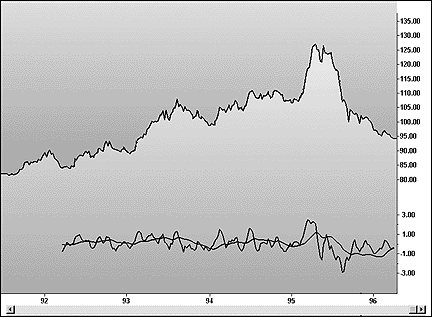"Market technicians looking to pinpoint market tops and bottoms have long been fascinated by the cyclical activity of markets. The oscillator, which is the class of indicators used to model the cyclical nature of markets, typically will filter the trend out of prices, leaving only the tradable cycles. In addition, an oscillator is a type of momentum indicator that shows the acceleration and deceleration of markets. When a market has been accelerating upward and then begins to slow, the oscillator levels off, indicating the price action as a market top. Likewise, if a market is accelerating downward and that acceleration slows, then a bottom is indicated by the oscillator leveling off and then rising."
SYSTEM COMPONENTS
"The first component of the trading system is the oscillator. Most oscillators use the difference between price and a moving average, but I am using the linear regression slope function found in SuperCharts."
"Figure 1 shows a weekly closing price of the continuous contract of the yen futures contract with the oscillator plotted in the lower graph."
